These are the projects currently taking place at eSpace and within the student associations for Spring 2025.
Whether you want to find a project or propose one, make sure to check the guidelines of your section first.
Each section has its own rules for semester projects that will apply by default.
The master project guidelines are the official rules for the entire EPFL.
This info icon shows which projects are still accepting applications from students. Hover to view.
-
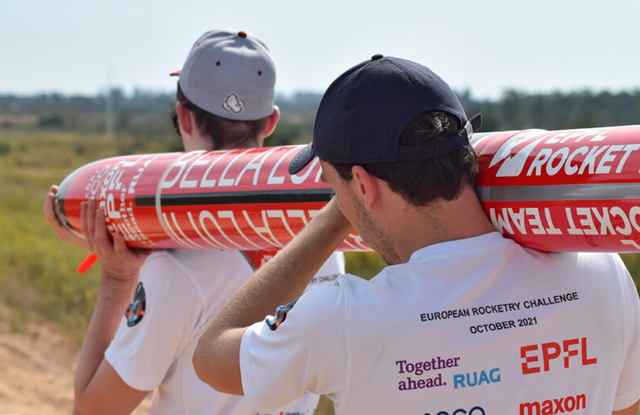
EPFL Rocket Team
-
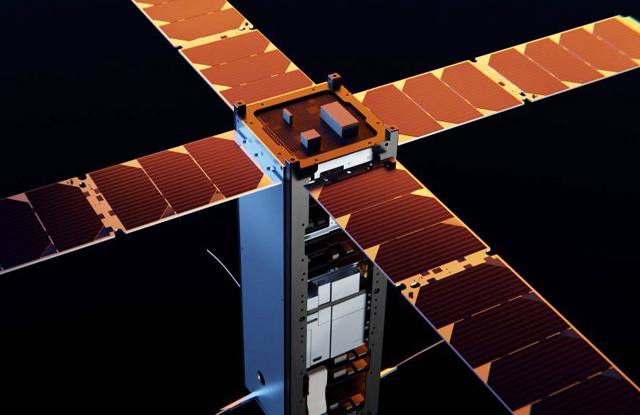
EPFL Spacecraft Team
-
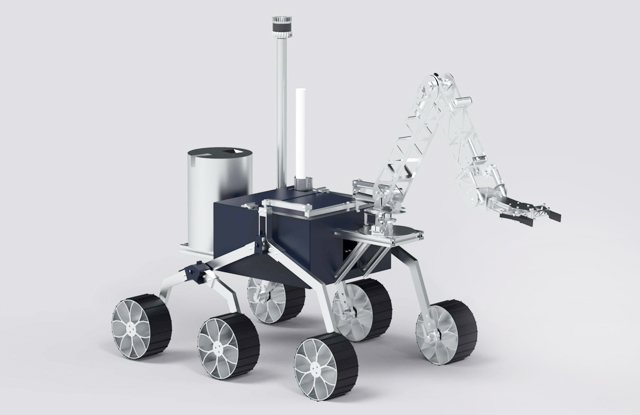
Xplore
-
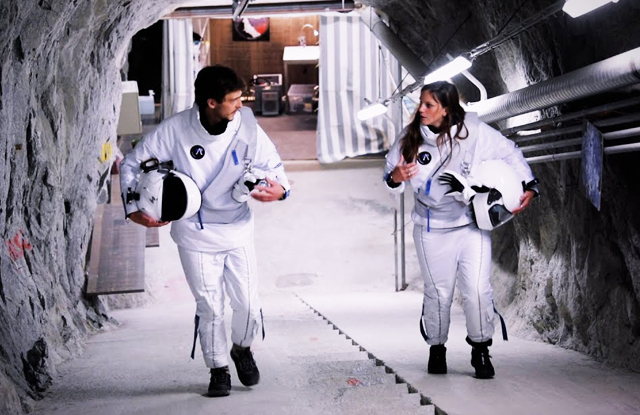
Asclepios

Measurements of emissions (gas and particles) during propulsion tests at the EPFL Rocket Team
Supervisor: eSpace, Mathieu Udriot / Prof. Jean-Paul Kneib
Type of Project: Semester project, 1 student
Duration: 14 weeks
Submission of final report: TBD in June 2025
Final Presentation: TBD
Recommended: This project is suitable for a student interested in the space industry, propulsion systems, sensors, and test benches (set-up), data acquisition, and atmospheric impacts. Prior knowledge in data acquisition or measurement is a plus.
CONTEXT
eSpace is actively researching and developing methods and products in space sustainability. This large topic includes work on space debris risks, life cycle assessment of space systems, mitigations of environmental impacts, and decision-making support tools to include sustainable aspects in the early design phase of space missions and systems.
The assessment of the environmental impacts of rocket engine exhausts in the atmosphere is not yet backed by solid scientific knowledge. There is no accepted method to translate the emission of a given amount of exhaust species (like CO2, CO, H2O, HCl, black carbon, or else) at high altitude into an impact (like CO2 equivalent). What can be done already is to quantify the emissions of propulsion systems, so as to understand which particles and gases are generated and exhausted by the engine and in what quantity during tests.
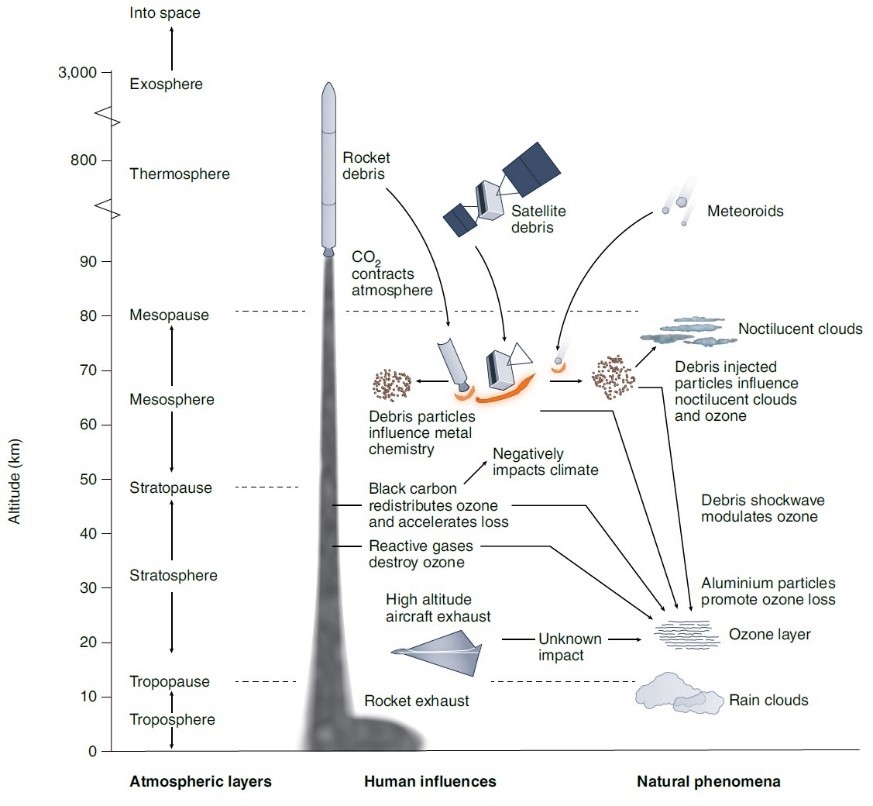 Jamie D. Shutler et alli, “Atmospheric impacts of the space industry require oversight”, (August 2022), in: Nature Geoscience, volume 15, p. 598–600, www.nature.com/naturegeoscience.
Jamie D. Shutler et alli, “Atmospheric impacts of the space industry require oversight”, (August 2022), in: Nature Geoscience, volume 15, p. 598–600, www.nature.com/naturegeoscience.
The EPFL Rocket Team is developing and testing new propulsion systems, with engines using different types of propellant, and based on new design, in preparation for its future rockets. The medium-term goal of the ERT is to fly to 100 km altitude.

It is important for the EPFL Rocket Team to understand their student-developed engines, not only in terms of performance but also regarding emissions. Knowledge about the content of the exhaust could drive future development to select different types of propellant, change mix ratio or other design parameters.
The topic is and large companies in Europe. Many are interested in measuring emissions of their engines during ground tests and directly in the atmosphere, to understand the chemistry that takes place at different altitude level. Several projects are ongoing or will soon start, through ESA or directly with industrial entities.
PROJECT SCOPE
The main goal of the project is to prepare a measurement campaign of the exhaust gases and particles generated by rocket engines used by the EPFL Rocket Team.
The test bench used by the team will require adaptations to accommodate sensors needed for the measurements. The measurements can possibly be carried out during ignition tests, and static fire tests.
It is also in the scope to investigate the feasibility to conduct another test campaign during low altitude launches by the EPFL Rocket Team.
OUTCOME
- A report including
- The state-of-knowledge regarding launchers’ exhausts.
- The state-of-affair regarding sensing method for the species of interest.
- A list of selected gas / particle sensors and measurement instruments adapted to the task.
- Computer-Aided Drawings of the ERT’s test bench adaptations, needed for exhaust measurements.
- Recommendations for future studies.
- A comprehensive test procedure to conduct a measurement campaign.
- (optional, if time allows) Results of some measurements made on the ERT propulsion system, in a format easy to use for future students.
TASKS
Phase 1:
- Literature review on launchers’ exhausts depending on their propulsion type.
- Searching for the best suited sensors to perform measurements of interest.
Phase 2 (after ordering some sensors):
- Drawing CAD adaptation for the test bench.
- Writing a test procedure to use for a measurement campaign.
- Implement changes on the test bench (and if time allows, perform sets of measurement using the sensors).
Phase 3:
- Searching for the best suited sensors and measurement scenario(s) to perform in-flight data collection of emissions of interest. Ideas include but should not be limited to: on-board sensors, air balloons, second rocket with sensors, satellite imaging, etc.
- Deeper investigation and systems architecture for a subset of selected potential solutions.
CONTACT
Mathieu Udriot
Systems Engineer on Sustainable Space
mathieu.udriot@epfl.ch
Leonard Bongiovanni
EPFL Rocket Team Hyperion Systems Engineer
leonard.bongiovanni@epfl.ch
STATUS OF THE PROJECT
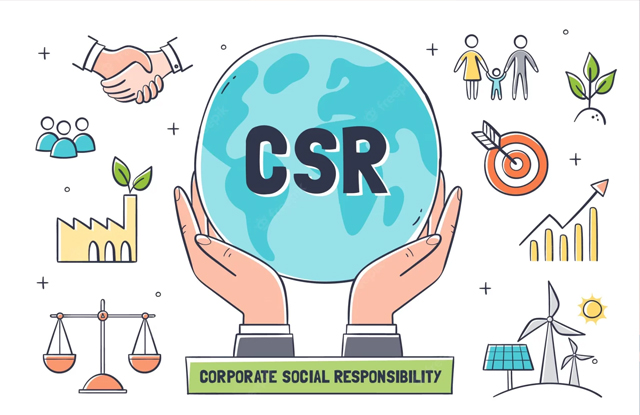
What is the perception of Space Sustainability by Insurers?
Supervisor: eSpace, Emmanuelle David / Prof. Jean-Paul Kneib
Type of Project: Semester, 1 student
Duration: 14 weeks (Official start/end date: Feb. 19th – May 31st 2024)
Submission of final report: TBD in June 2024
Final Presentation: TBD
Recommended: This project is suitable for a student interested in the space industry, and Technology policy, ideally the student is in the Master in Management, Technology and Entrepreneurship.
CONTEXT
eSpace is actively researching and developing methods and products in space sustainability. This large topic includes work on space debris risks, life cycle assessment of space systems, mitigations of environmental impacts, rating incentives, and decision-making support to include sustainable aspects in the early design phase of space missions and systems.
In this context, one hypothesis is often expressed : Investors will choose a sustainable business over another.

https://inkbotdesign.com/corporate-social-responsibility/
PROJECT SCOPE
The project will draw over research perform in the last year within the center, notably on how to incentives sustainability based on the:
- Space Sustainability Rating in Support of the Development and Adoption of Regulatory Guidelines Related to Long-Term Sustainability.
- Fostering multi-stakeholder collaboration for space sustainability through an incentive-based mechanism
OUTCOME
A report compiling the literature review, the analysis of the literature and interviews and possible recommendation for actions
TASKS
- Literature review on study about investing and sustainability
- Definition of research questions
- Possible interviews with investors with the supervisor
- Definition of actions and measure to inform, educate and incentive sustainability investing in the space sector
CONTACT
Emmanuelle David
Executive Director
eSpace - EPFL Space Center
emmanuelle.david@epfl.ch
STATUS OF THE PROJECT

Study of Systems Engineering in MAKE projects
upervisor: Emmanuelle David / Prof. Jean-Paul Kneib
Type of Project: Semester, 1 student
Duration: 14 weeks
Submission of final report: TBD in June 2025
Final Presentation: TBD
Recommended: This project is suitable for a student interested in the space industry, and Technology policy, ideally the student is in the Master in Management, Technology and Entrepreneurship.
CONTEXT
The EPFL Space Center is the interdisciplinary hub that brings together all aspects of space education, research and innovation. The EPFL Space Center comprises two groups, eSpace and Space Innovation.
The mission of eSpace is to promote space-related research, support EPFL’s space-affiliated professors, coordinate the Minor in Space Technologies, and manage the EPFL student teams.
The mission of Space Innovation is to support space industries, academies and research and technologies organisations in Switzerland by coordinating and maintaining the network and offering access to cutting edge technologies, test facilities, continuing education and outreach activities
PROJECT SCOPE
As eSpace is supervising three teams, we observe that each has their own way to implement Systems engineering since their creation in the past 5 years. The project aims to understand what students took from industry best practices and how they adapted to the constraints of a student project with also short design cycles.
OUTCOME
- A report compiling the literature review, the analysis of the different SE methods and recommendations on how to streamline SE methods in MAKE projects.
- A presentation to share also with Swiss industry players and potentially to a large conference
TASKS
- State of the art of system engineering and technical project management at ESA and in the newspace industry
- Adapt these theories to the MAKE projects with three actual teams:
- EPFL Rocket Team
- Xplore
- EPFL Spacecraft Team
- Compare the different approaches in the each teams
- Analyse the performance and pro/cons of each approach
- Recommendations to the associations
CONTACT
Emmanuelle David
Executive Director
eSpace - EPFL Space Center
emmanuelle.david@epfl.ch
STATUS OF THE PROJECT
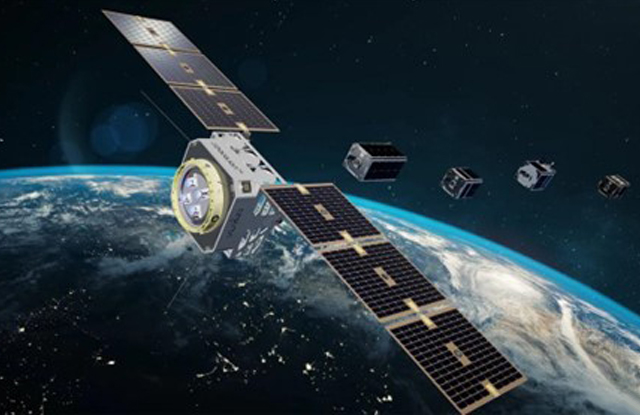
Life Cycle Assessment and Ecodesign applied to Exotrail’s SpaceVan
Supervisor: eSpace, Mathieu Udriot / Prof. TBD depending on university
Type of Project: Internship or Master project in industry, 1 student
Duration: ~6 months, depending on type and university
Submission of final report: TBD in March 2025
Final Presentation: TBD
Recommended: This project is suitable for a student interested in the space industry, satellite design, and environmental impacts mitigations. Prior knowledge of systems engineering, design in any engineering topic is a plus. Knowledge or experience with Life Cycle Assessment and Eco Design is an asset, but not mandatory.
CONTEXT
eSpace, is actively researching and developing methods and products in space sustainability. This large topic includes work on space debris risks, life cycle assessment of space systems, mitigations of environmental impacts, and decision-making support to include sustainable aspects in the early design phase of space missions and systems.
eSpace is now working for an ESA project called REACT with a consortium that includes IRS Stuttgart, and ISAE SUPAERO. The project will see the development of a simplified and space-specific tool for rapid life cycle assessment (LCA) of future space systems. The goal is to be able to run an analysis of the environmental impacts early in the design phase to provide valuable results to support decision-making for ecodesign when it is still possible and affordable. Ecodesign is a process to modify the architecture and design choices in order to mitigate the identified environmental hotspots.
eSpace is in contact with several companies that are interested in testing the methodology with their own mission.
One of them, Exotrail, is based in Massy and Toulouse (France), developing spacevan™ to address space logistics. In particular the spacevan™ is able to transfer satellites from GTO to GEO and deorbit satellites in Low Earth Orbit.
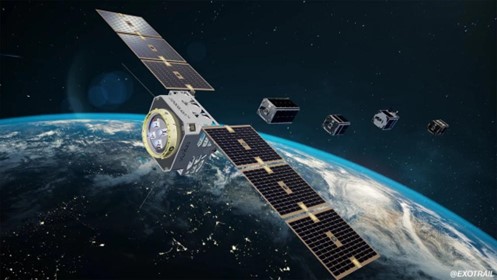 The spacevan™
The spacevan™
PROJECT SCOPE
The intern or master project student would help the company in their development of future spacevan™ by assessing and improving the environmental impact of their products, throughout their entire life cycle. They would also act as a privileged point of contact within the company, to support the research and tool development of the REACT consortium.
OUTCOME
A report including:
- Goal and scope definition of the LCA study
- Life cycle inventory for both mission:
- spacevan™ transfer GTO to GEO
- spacevan™ rendez-vous and proximity operations
- Life cycle impact assessment
- Interpretation of the results
- First steps in eco-design efforts for future missions
TASKS
Phase 1: Evaluate the environmental impacts:
- Literature review on life cycle assessment and the eco-design process in the space sector.
- Understand Exotrail’s product, design process, manufacturing and spacevan™s concept of operations.
- Use the tools developed by the REACT consortium for LCA screening, and environmental hotspot identification.
- Conduct life cycle assessments (LCA) at the company, considering all mission phases, from design and material extraction to end of life, proposing assumptions and methodological adaptation for their mission.
- Be the point of contact for interactions between the consortium and the industrial partner on this topic. Supporting research on screening LCA applied to a space system.
Phase 2: Incorporate eco design principles into the spacevan™ development process:
- Identify opportunities to minimise environmental impact through eco design.
- [TBD and if time allows] Collect data to create new LCI datasets for a second assessment iteration
- In collaborations with various teams within Exotrail, propose solutions to mitigate the environmental hotspots identified by the LCA.
- [TBC] Compare the environmental costs of the project with the possible gain for the target or passenger of the spacevan™.
CONTACT
Mathieu Udriot
Systems Engineer on Sustainable Space
mathieu.udriot@epfl.ch
Julien Dailloux
Exotrail
julien.dailloux@exotrail.com
STATUS OF THE PROJECT

Space Logistics Optimisation – Python software development
Supervisor: eSpace (Mathieu Udriot/Prof. Jean-Paul Kneib)
Type of Project: Master project, 1 student
Duration: 17-25 weeks
Submission of final report: TBD in 2025
Final Presentation: TBD
Recommended: This project is suitable for a student interested in the (new) space industry, future mission designs and operations, and who is top of the class in python coding, and familiar with object-oriented programming. Familiarity with the use of Github is a plus.
CONTEXT
eSpace is actively researching and developing methods and products in space sustainability and logistics. This large topic includes work on space debris risks, life cycle assessment of space systems, space logistics optimisation, trade-offs support and decision-making support that include sustainable aspects in the early design phase of space missions and systems.
The Technology Combination Analysis Tool (TCAT) has been developed at EPFL for ESA to model and simulate space logistics scenarios. The inputs are high level mission parameters that are available early on during design phases. Outputs help users select the best mission architecture to fulfil the mission’s objectives, and help identify technology gaps.

The tool right now can model two logistics scenarios, active debris removal of failed satellites and constellation deployment. Additional scenarios of on-orbit refuelling and interplanetary missions have been developed.
The Department of Space Launcher Systems Analysis (Systemanalyse Raumtransport; SART) at the DLR Institute of Space Systems is responsible for the design and analysis of launcher systems. Areas of research include, not only spacecraft design, but also the design and analysis of propulsion systems. The ability to integrate the study of spacecraft and thrusters in this way places SART in a unique position within Germany.
The student will spend ~8 weeks in Bremen to work closely with DLR SART on the topic, test their tools and understand the synergies that can be exploited with TCAT.
PROJECT SCOPE
The scope of this project includes the clean-up of the “modules” structure in the code to be able to perform design optimization loops from mission constraints (only possible reversely for now).
Modules are objects in the code that model subsystems of the in-space transportation system and their parameters (mass, power needs, etc.). Right now, three of those are used in the simulations: the propulsion module, the structure module, and the capture module (the latter is used for active debris removal capture systems or for modelling a dispenser).
Other modules exist in the code (e.g. AOCS, thermal, EPS) but their files are not usable and not used in the simulation yet.
Having modules describing all the subsystems of a spacecraft will allow more precise modelling and will open new opportunities for design optimization.
OUTCOME
- A report
- A branch on Github with model improvements, adaptation to the software, or new features
- An updated UML diagram
TASKS
Phase 1 (at EPFL, ~1 month):
- Familiarisation with the current version of the tool (online and of the python code).
- Literature review of subsystems of a spacecraft, and models.
- Encapsulation of the proposed changes and identification of file to modify.
Phase 2 (at EPFL, ~3 months):
- Implementation of the changes (defined with the project supervisor after the first phase) to TCAT on a new GitHub branch.
- Clean-up of the modules’ files.
- Start defining the “reverse TCAT” loop: using TCAT with its current outputs as inputs to compute preliminary sizing of future space systems.
- Start documentation in parallel.
Phase 3 (at DLR SART, ~2 months):
- Tests with DLR tools, to understand their existing capabilities in space logistics simulation, stage / spacecraft preliminary sizing.
- Identification of potential compatibility between TCAT and other tools.
- Continue on the implementation of the code and the documentation.
CONTACT
Mathieu Udriot
Systems Engineer on Green Space Logistics
eSpace - EPFL Space Center
mathieu.udriot@epfl.ch
Martin Sippel
Deutsches Zentrum für Luft- und Raumfahrt (DLR)
Institut für Raumfahrtsysteme - Systemanalyse Raumtransport
STATUS OF THE PROJECT
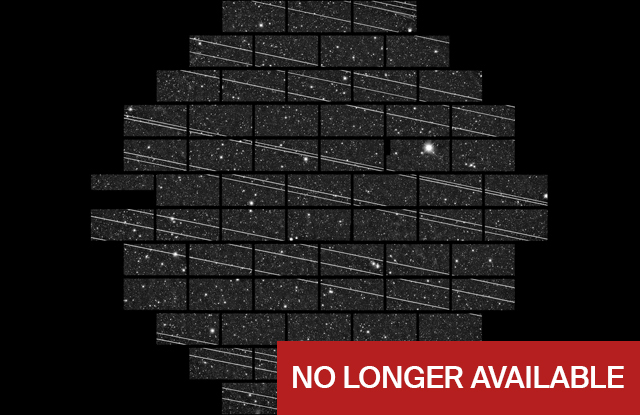
Develop a novel orbit fitting routine
Supervisor: eSpace/LASTRO (Prof. Jean-Paul Kneib/Stephan Hellmich)
Type of Project: Semester project (TP4b)
Duration: 14 weeks (Official start/end date: February 17-May 30)
Submission of final report: June 16
Final Presentation: TBD
Recommended: This project is suitable for a student interested in orbital mechanics and numerical integration. Prior knowledge in Python is a plus.
CONTEXT
As part of the newly established Space Sustainability Hub (SSH) at eSpace, we are exploring novel techniques for determining the rotational and physical properties of space debris. For this purpose, we are currently developing methods for the detection and extraction of space debris observations from large astronomical data archives. These archives contain observational data over a 10-year period and include a large amount of random satellite and space debris observations. On the astronomical images, these objects appear as characteristic streaks, most of which cross the entire detector during the several minutes of exposure time. To identify the object that caused the streak, the observations are correlated with publicly available catalogs of satellites and space debris. However, due to uncertainties in the cataloged orbital elements, propagation errors and the fact that the real orbits are constantly changing, the observation does not precisely match the cataloged orbit. In order to determine the precise observation time, the orbits from the catalogs need to be fitted to exactly match the observation.
PROJECT SCOPE
The goal of this project is to develop an orbit determination method that does not rely on exact observation time stamps, but rather treat the observation time as a variable during the fitting process. Existing orbital mechanics libraries such as Orekit contain sophisticated orbit determination and fitting routines. These methods however account only for errors in the astrometry (the measured position of an orbital debris particle in the sky) and not for uncertainties in the observation time. Due to the high spatial resolution of the images, the astrometry is very accurate but for the objects that cross the whole field during the exposure, the exact exposure time is unknown. In order to be able to fit the orbits of the identified objects to the observations, the uncertainty in the timing needs to be considered.
TASKS
- Familiarize yourself with the Orekit orbital dynamics library
- Develop a tool to fit a refined orbit from multiple orbits or observations of the same object
- Design and implement a method that fits the refined orbit to a streak, taking into account the uncertainty of the observation time
CONTACT
Dr. Stephan Hellmich
LASTRO - EPFL Laboratory of Astophysics
stephan.hellmich@epfl.ch
STATUS OF THE PROJECT
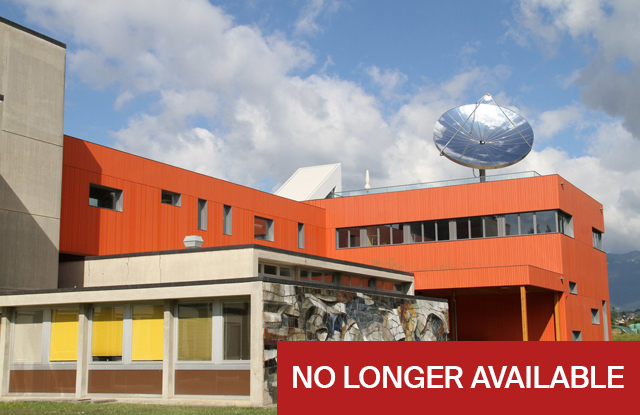
Enabling the Sauverny Observatory for space debris observations
Supervisor: eSpace/LASTRO (Prof. Jean-Paul Kneib/Stephan Hellmich)
Type of Project: Semester project (TP4b)
Duration: 14 weeks (Official start/end date: February 17-May 30)
Submission of final report: June 16
Final Presentation: TBD
Recommended: This project is suitable for a student interested in the software design of autonomous observatories and space surveillance and tracking with a background in software engineering. Prior knowledge in Python is a plus.
CONTEXT
eSpace and LASTRO are currently expanding their observation capabilities for physical characterization of space debris. With TELESTO, a 60 cm telescope located at the Sauverny observatory, EPFL has access to suitable observing equipment. However, in its current state, the telescope is not very well suited for the observation of space debris as the control software does not allow tracking objects in Low-Earth orbit. To overcome these problems, the telescope control software needs to be improved. This can be achieved by an open loop control system that commands the telescope based on the orbital elements of the space object that should be tracked.
PROJECT SCOPE
During the project, you will familiarize yourself with the telescope and its software environment. You will learn about the requirements of passive optical observations of space debris. In order for the telescope to be used for space debris observation, the control of the various subsystems of the facility needs to be integrated into an easy-to-use interface through which pointing and tracking of the telescope is done based on the orbital elements of the object to be observed. Since the capabilities of the telescope such as maximum tracking speed, tracking accuracy, response time and maximum rotation rate of the dome are not known, tests to find these constraints need to be performed in order to determine which objects can be reliably observed.
TASKS
- Familiarize yourself with the telescope and the software interface
- Develop a tool that controls the telescope based on the orbital elements of a space object
- Perform tests to determine the limitations of the telescope
CONTACT
Dr. Stephan Hellmich
LASTRO - EPFL Laboratory of Astophysics
stephan.hellmich@epfl.ch
STATUS OF THE PROJECT
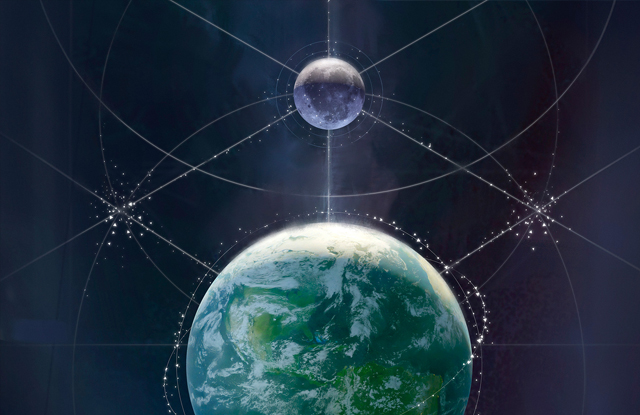
Space Situational Awareness in cislunar space
Supervisor: eSpace/LASTRO (Prof. Jean-Paul Kneib/Stephan Hellmich)
Type of Project: Semester project (TP4b)
Duration: 14 weeks (Official start/end date: February 17-May 30)
Submission of final report: June 16
Final Presentation: TBD
Recommended: This project is suitable for a student interested in astronomy and space sustainability.
CONTEXT
After almost five decades have passed since the last human set foot on our satellite, the moon has once again become the focus of various activities in recent years. Several public and private initiatives for the exploration and exploitation of the moon are in the planning stage. Once they are realized, they will contribute to a significant increase of traffic in cislunar space over the coming decades. In order to organize traffic to and around the moon, to ensure the safety of future missions and, above all, to prevent the pollution of cislunar space as we find it in Earth orbit, strategies and infrastructures for monitoring this traffic must be created. Although most likely a space based surveillance network will be established, ground based telescopes will always be necessary to complement the observations. We plan to use the 0.6m TELESTO optical telescope at the Observatory of Geneva for cislunar SSA. The telescope was recently upgraded with a new high performance CMOS detector that enables observations of man made space objects in Earth’s orbit and beyond. Our goal is to establish an observation program to support lunar SSA.
PROJECT SCOPE
During the project, you will identify objects that are observable with TELESTO from databases of known objects in cislunar space. Tools to compute ephemeris of these objects need to be developed in order to schedule the observations. Finally, you will perform test observations with TELESTO to evaluate its capabilities in order to establish an observation program of objects in cislunar space.
TASKS
- Identify observable targets in databases of known objects in cislunar space (e.g. moondb or the NEOCP)
- Implement routines to observe these objects with TELESTO
- Perform test observations and orbit determination
CONTACT
Dr. Stephan Hellmich
LASTRO - EPFL Laboratory of Astophysics
stephan.hellmich@epfl.ch
STATUS OF THE PROJECT
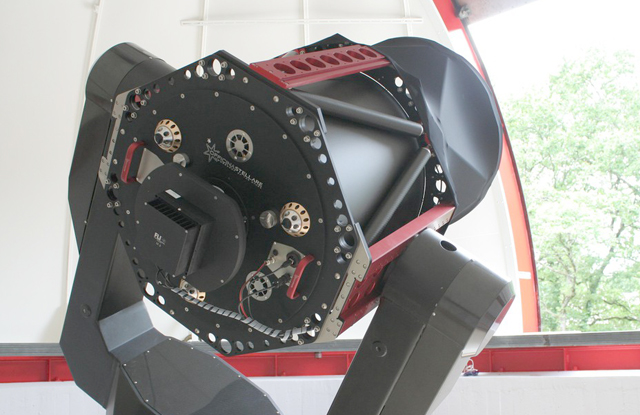
Correct the rolling shutter effect of the new TELESTO CMOS detector
Supervisor: eSpace/LASTRO (Prof. Jean-Paul Kneib/Stephan Hellmich)
Type of Project: Semester project (TP4b)
Duration: 14 weeks (Official start/end date: February 17-May 30)
Submission of final report: June 16
Final Presentation: TBD
Recommended: This project is suitable for a student interested in astronomy and optical instrument design.
CONTEXT
The 0.6m TELESTO optical telescope at the Observatory of Geneva was recently upgraded with a new CMOS detector. The instrument uses a rolling shutter which results in the time of exposure not being the same for each pixel in the acquired image. While this effect is not important for most applications, it needs to be considered for example for space object observations, where knowledge about the precise timing is very important to determine the orbit or to perform photometric analysis. The characteristics of the shutter were already identified in a previous project. This project aims to develop a technique to correct for the rolling shutter effect for observations of fast moving objects.
PROJECT SCOPE
During the project, you will familiarize yourself with the new detector and learn about requirements of passive optical observations of satellites and space debris. In order for the camera to be used for space debris observation, the rolling shutter effect needs to be corrected for. Based on previous work where the line readout speed was determined, a method needs to be implemented that determines the precise start and end of exposure for each pixel of the detector. This method needs to account for trailed observations (where the positions of the stars on the image remain constant over the exposure) and tracked observations (where the stars move across the detector while exposing). To verify the correction, you will use TELESTO with the new detector to perform test observations of satellites in Low Earth Orbit (LEO), apply the shutter correction and verify the astrometry derived from the images.
TASKS
- Familiarize yourself with the hardware and software interfaces
- Implement routines to correct the shutter effect
- Perform observations of satellites in LEO
- Verify the shutter correction
CONTACT
Dr. Stephan Hellmich
LASTRO - EPFL Laboratory of Astophysics
stephan.hellmich@epfl.ch
STATUS OF THE PROJECT
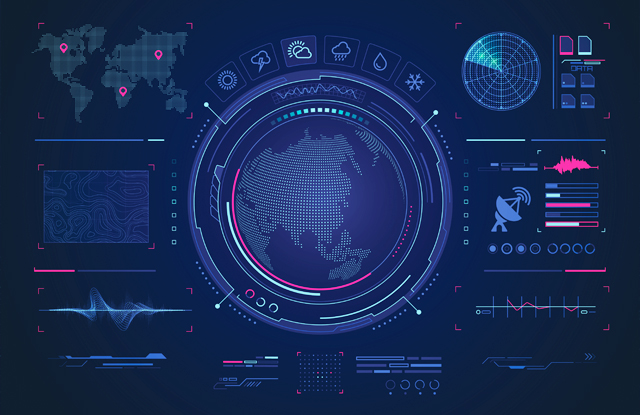
Develop a weather monitoring system for the observatory of Geneva
Supervisor: eSpace/LASTRO (Prof. Jean-Paul Kneib/Stephan Hellmich)
Type of Project: Semester project (bachelor)
Duration: 14 weeks (Official start/end date: February 17-May 30)
Submission of final report: June 16
Final Presentation: TBD
Recommended: This project is suitable for a student interested in the software design of autonomous observatories and space surveillance and tracking with a background in software engineering. Prior knowledge in Python is a plus.
CONTEXT
eSpace and LASTRO are currently expanding their observation capabilities with TELESTO, a 60 cm telescope located at the observatory of Geneva in Sauverny. To enable remote observations, a new weather station was recently installed at the telescope. This weather station does not only provide the remote observer with critical information on the observing conditions on site but can also initiate emergency procedures to close the dome to protect the equipment in case of dangerous weather conditions. This project is intended to develop a graphical user interface that provides the user with a comprehensive overview of all relevant sensor readings and issues alerts in case the weather conditions require to pause observations.
PROJECT SCOPE
During the project, you will familiarize yourself with the telescope and its hardware and software environment. The weather station is connected to the acquisition PC via serial port and the vendor provides a python package that contains an API to access the sensor readings and configure the station. Your task will be to design and develop a graphical user interface for the weather station using the API provided by the vendor. The interface should display all relevant sensor data in the form of a dashboard, allow configure thresholds for warnings and autonomous dome emergency closure and also issue alerts in case the conditions get critical. These alerts should be implemented in several stages, ranging from acoustic warning to sending an SMS to the remote observer.
TASKS
- Familiarize yourself with the telescope, weather station and the software interfaces
- Develop a graphical user interface in the form of a dashboard that provides the observer with critical information on the weather conditions
- Implement configurable alert procedures to inform the remote observer in case the conditions become dangerous
CONTACT
Dr. Stephan Hellmich
LASTRO - EPFL Laboratory of Astophysics
stephan.hellmich@epfl.ch
STATUS OF THE PROJECT
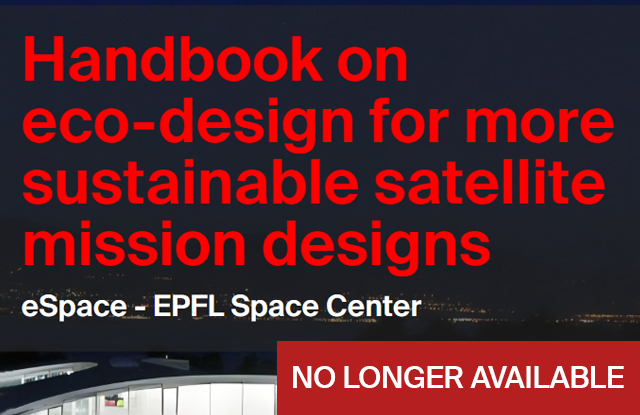
Handbook on sustainable design practices for space missions and the launch segment
Supervisor: Marnix Verkammen / Prof. Jean-Paul Kneib
Type of Project: Semester project, 1 student
Duration: Duration: 14 weeks
Submission of final report: TBD in June 2025
Final Presentation: TBD
Recommended: This project is suitable for an ambitious student interested in the space industry, in gaining insights into the upcoming trends of space sustainability, and in playing an essential role in the creation of industry-wide sustainability guidelines. Knowledge on the space sector and in particular launchers is a plus.
CONTEXT
eSpace is actively researching and developing methods and products in space sustainability. This large topic includes work on space debris risks, life cycle assessment of space systems, mitigations of environmental impacts, and decision-making support to include sustainable aspects in the early design phase of space missions and systems.
To help designers take into account these topics and act upon them during the design phase, eSpace developed a handbook which provides general recommendations for space mission designers. It guides them through the environmental implications of their propulsion system, helps them with choosing additional hardware for more sustainable orbital usage during and after the mission, discusses the operational best practices and highlights key performance indicators for their satellite design. As such, the handbook currently focuses on the space segment of space missions.
With eSpace’s ambition to create an industry-leading and all-encompassing handbook, it is foreseen to add for more sustainable practices of the launch segment, ground segment and the infrastructures. These would help companies and designers of these respective segments to navigate through the best practices and most suitable decisions to be made, with respect to a reduction in environmental impacts.
PROJECT SCOPE
In this project, the student will research sustainable practices for either the launch or ground segments of space missions, but may also investigate both. The main focus in the launch segment would be amongst others the propulsion technologies, disposal options and other common practices. The student will also brainstorm on practices in the ground segment which should be detailed in the Handbook during a future semester project.
OUTCOME
- Writing of the Part on Launch Segment or Ground Segment (depending on the sudent’s interests) in the Handbook on sustainable space design practices
- Critical review of the current state of the Handbook
TASKS
- Critical read of the Handbook
- Literature review on the launch segment and its sustainable practices or recommendations
- Writing of the Launch or Ground Segment part in the Handbook
- Suggestions for future work on the non-chosen segment (launch or ground)
CONTACT
Marnix Verkammen
Engineer, eSpace
marnix.verkammen@epfl.ch
STATUS OF THE PROJECT
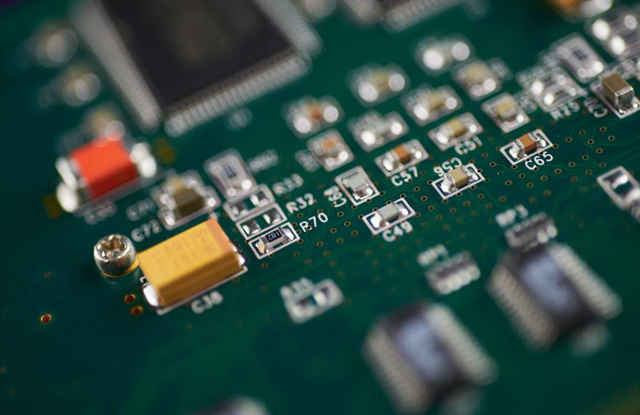
Design and manufacturing of space-grade electronic hardware for educational test in TVAC and Clean Room
Supervisor: Marnix Verkammen / Gilles Feusier
Type of Project: Semester project, 1 student
Duration: Duration: 14 weeks
Submission of final report: TBD in June 2025
Final Presentation: TBD
Recommended: This project is suitable for an ambitious student interested in the space industry, wishing to gain hands-on experience in the design of space systems, to apply their engineering skills to a very demanding sector and to improve EPFL’s education for future students. Knowledge of the space sector’s constraints is a plus, and general knowledge in system engineering is recommended.
CONTEXT
EPFL delivers a wide range of space-specific courses, covering topics such as space mission design, space mechanisms, space propulsion, space sustainability and New Space economy. Beyond these in-depth theoretical classes, the EPFL Space Centre’s goal is to provide hands-on experiences to students, to make space engineering more tangible.
One series of courses in which this will be most relevant are those revolving around space systems engineering, particularly the course EE-584 Spacecraft Design & System Engineering. In that course, a practical session has been pioneered in the 2024 autumn semester, where students had the opportunity to visit the Clean Room, see the Thermal Vacuum Chamber (TVAC) and observe a small electronics board.
For this course, a more complete hands-on practicum is to be developed, during which students will manipulate a notional space-grade electronics hardware in the TVAC and/or the Clean Room. This hardware will simulate a subsystem of a small satellite and will have the necessary interfaces for tests to be performed.
PROJECT SCOPE
In this project, the student will research common electronics for a small satellite’ subsystems, choose off-the-shelve components and design a simplified spacecraft subsystem for practical sessions in EE-584, which shall be compliant with assembly in a clean room environment, and which can be tested under thermal vacuum (temperature range to be defined). If time allows, the hardware will be produced and readied for the autumn semester of 2025. Moreover, the student will propose next steps for the practical classes in the space system engineering courses offered by EFPL. This may include a next hardware update and a larger vision on the hands-on approach of the EPFL classes.
OUTCOME
- List of common space-grade off-the-shelve components for notional spacecraft subsystems, compliant to clean room assembly and to thermal vacuum testing, and their usability to this project
- Design of a notional spacecraft subsystem tailored to be handled and tested during the practical sessions of the lectures, as defined by the lecturers of EE-584
- If time allows production of the hardware (or outsourcing of the production
- Discussion on next steps for the hardware and on future avenues for practical classes in EPFL’s space lectures.
TASKS
- Literature review of off-the shelves components that can be used for space-grade hardware or simulate it.
- Design of a notional space electronics hardware
- Suggestions for next steps (for hardware and education)
CONTACT
Marnix Verkammen
Engineer, eSpace
marnix.verkammen@epfl.ch
Gilles Feusier
Space Innovation
gilles.feusier@epfl.ch
STATUS OF THE PROJECT
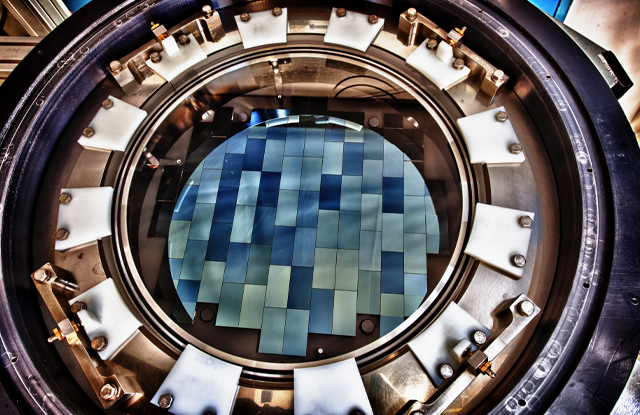
Detect space objects observed with the Dark Energy Camera
Supervisor: eSpace/LASTRO (Prof. Jean-Paul Kneib/Elisabeth Rachith/Stephan Hellmich)
Type of Project: Semester project
Duration: 14 weeks (Official start/end date: February 17-May 30)
Submission of final report: June 16
Final Presentation: TBD
Recommended: This project is suitable for a student interested in data science and machine learning
CONTEXT
As part of the newly established Space Sustainability Hub (SSH) at eSpace, we are exploring novel techniques for determining the rotational and physical properties of space debris. For this purpose, we are currently developing methods for the detection and extraction of space debris observations from large astronomical data archives. On the astronomical images, these objects appear as characteristic streaks, most of which cross the entire detector during the several minutes of exposure time. While satellite streaks are usually considered as negative interference with astronomical observations, they also contain valuable insights about the observed object. Large data archives from wide field survey telescopes contain large amounts of random satellite and space debris observations and are therefore an additional source for important information that are relevant to better understand the space debris population and support active debris removal. For developing and testing the detection and data reduction techniques we focus on the archive acquired within the last decade by OmegaCAM, a 256 megapixel CCD mounted at the 2.6 m ESO VLT Survey telescope (VST). However, a few minor modifications will allow processing data from other telescopes too. This project is intended to prepare the streak detection to be used on images acquired by the 500 megapixel Dark Energy Camera (DECam), mounted on the 4 m Victor M. Blanco telescope at the Cerro Tololo Inter-American Observatory.
PROJECT SCOPE
The main goal of this project is to create a dataset to train and validate the machine learning based streak detection algorithm on DECam images. The surveys that were carried out with the Blanco telescope cover large parts of the observable sky in multiple astronomical filters and thus result in very diverse data. Further, the satellite streaks can have very different appearances depending on orbit, size, shape, material properties and rotation of the observed object. Thus, the images for training and validation need to be a carefully selected dataset that covers all the different aspects. A framework for data annotation for VST data is already existing and can be adapted to be used for DECam images. Once a suitable dataset is compiled, the neural network can be re-trained and its performance on DECam images can be evaluated.
TASKS
- Familiarize yourself with the DECam astronomical data archive observational data formats
- Modify the tools for data annotation to be used with DECam images
- Select a representative dataset for training and validation
- Annotate the satellite streaks and introduce synthetic streaks
- Re-train the neural network and analyze its performance on DECam images
CONTACT
Dr. Stephan Hellmich
LASTRO - EPFL Laboratory of Astophysics
stephan.hellmich@epfl.ch
STATUS OF THE PROJECT
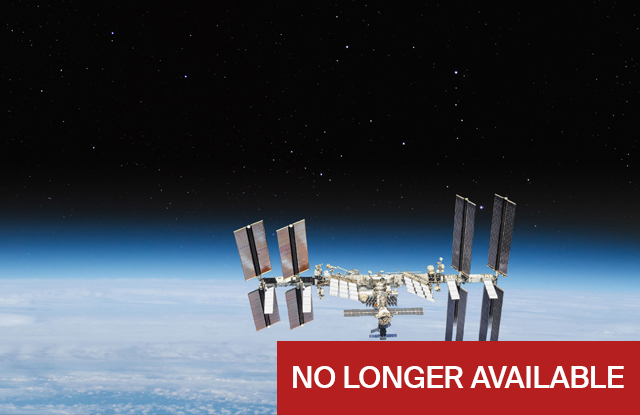
Microgravity Object Capture on the ISS Phase 0 Feasibility Study
Supervisor: Andrew Price /Stephan Hellmich / Emmanuelle David
Type of Project: Semester’s project, 1 student
Duration: 14 weeks (February 17 - May 30)
Submission of final report: TBD in June 2025
Final Presentation: TBD
Recommended: This project is intended for a student interested in the space sector systems engineering. General knowledge of systems engineering is recommended.
 Image courtesy of the Swiss Space Office
Image courtesy of the Swiss Space Office
CONTEXT
In conjunction with Marco Sieber qualifying as Switzerland's second astronaut, the Swiss Space Office has released a call for interest to perform experiments onboard the ISS (link below). The EPFL space center is currently involved in preparing one such proposal with a large consortium of partners across Switzerland. The proposal involves sending a small cubesat to perform experiments in microgravity onboard the ISS in a controlled (and pressurized) environment. A concept definition has been proposed but technical feasibility; cost estimates, schedule estimates and a risk assessment have yet to be performed. The objective of this project would be to perform a phase-0 study in support of the EPFL space center ISS project.
PROJECT SCOPE
The student will be introduced to the mission concept, the consortium partners and the proposed subsytems. The student will employ the ESA mission planning framework to the proposed mission. The student can expect opportunities to interact with different space industry members in Switzerland.
TASKS
- Develop a preliminary outline of how the mission will be conducted;
- Perform a preliminary cost estimation; and
- Conduct a risk assessment.
References
https://www.sbfi.admin.ch/sbfi/en/home/research-and-innovation/space/call-for-interest.html
CONTACT
Andrew Price, PostDoc at eSpace
andrew.price@epfl.ch
STATUS OF THE PROJECT
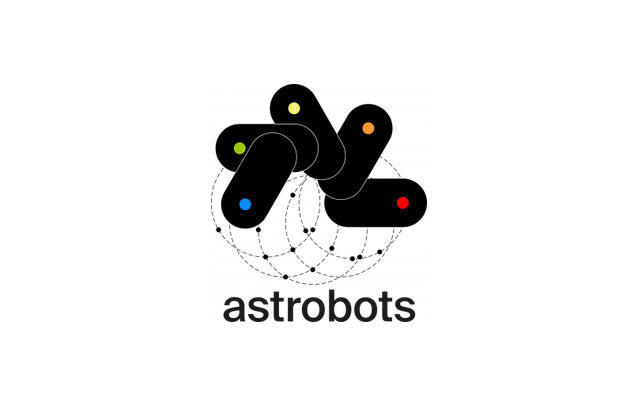
Robotic Fiber Positioner Collision Avoidance
Supervisor: LASTRO Astrobots, Jonathan Wei / Prof. Jean-Paul Kneib
Type of Project: Master project, 1 student
Duration: ~6 months
Submission of final report: TBD
Final Presentation: TBD
Required:
- MSc in microengineering, robotics, computer science or similar
- Good Experience in Python
- Basic knowledge in control software and embedded software
- Ability to write well-structured and modular code
- Proactive, problem-solving skills
CONTEXT
Astrobots is working on robotic fiber positioners for telescopes. The positioners have to be oriented towards their target in order to get the spectra of the chosen star. However, a focal plane will contain a high number of positioners (around 20’000), and the patrol areas of those positioners overlap. Therefore, a collision avoidance software is required in order to avoid the positioners to collide, both in operations and in tests. More information about Astrobots can be found here. A presentation about the algorithm used in MOONS can be found here.
 Figure 1: MOONS focal plane filled with robotic positioners
Figure 1: MOONS focal plane filled with robotic positioners
Source: Steven Beard et al., Control and Collision Avoidance with the MOONS Fibre Positioners, UK Astronomy Technology Centre
https://indico.esrf.fr/event/4/contributions/125/attachments/44/145/Steven_BEARD_FibrePosititionerControl_EIRO_Forum_01_06_22.pdf
PROJECT SCOPE
The project would consist of developing the collision avoidance software for the current version of the positioners. As the positioners are very close to each other, their The project would undergo the following steps:
- Literature review: understand the existing work on the subject. Understand the underlying principles used to perform collision avoidance. Understand the pros and cons of the used methods, and choose the best method for the current positioners setup. (0.5 month)
- Algorithm development:
a. Development of a positioner simulator to use as the first build brick of the project
b. Implementation of the path planning algorithm for the positioners, based on the literature review and the requirements for the current positioners setup. Development of algorithm “clear” the path of 1 positioner. Development of the associated Finite State Machine (TBD) (1.5 month) - Simulations and testing: testing of the collision avoidance algorithm first on simulation, then on the positioners when all the tests have been passed on simulation. Verification of compliance to requirements. (1.5 month)
- Writing of thesis and final presentation (0.5 month)
Instead of assembling individual robots as for MOONS, the next generations of highly multiplexed focal planes are assembled by modules of 63 robots. The working area of each positioner overlaps (Figure 2 (a)), but not the working area of the different modules.There is enough space between the working area of the positioners on the sides of each module such that they will never collide with each other (Figure 2(b)). The collision avoidance problem’s scope can then be reduced to 1 module. Each positioner has 2 motorized axes (alpha and beta) which can move the fiber tip, and each axis has a limited movement range (it cannot turn indefinitely).

Figure 2: (a) Workspaces of 63 robots inside a triangular module (b) ⅙ of a populated focal plane highlighting the separation between modules
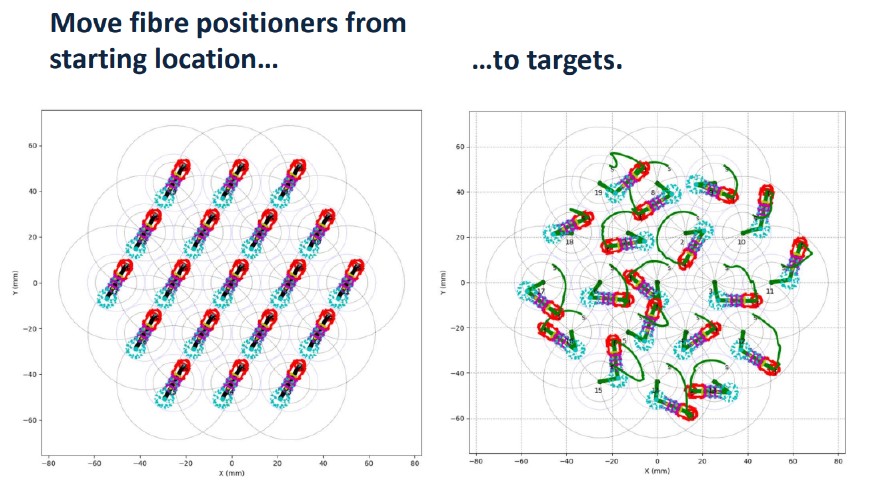 Figure 3: MOONS positioners illustration
Figure 3: MOONS positioners illustration
Source: Steven Beard et al., Control and Collision Avoidance with the MOONS Fibre Positioners, UK Astronomy Technology Centre.
https://indico.esrf.fr/event/4/contributions/125/attachments/44/145/Steven_BEARD_FibrePosititionerControl_EIRO_Forum_01_06_22.pdf
The current list of requirements are preliminary and will be adapted as the project progresses. The current requirements apply to a module of 63 positioners:
1. The positioners shall be able to reach any point in their patrol area without hitting any other positioner within 40 seconds of the moving command being sent.
2. The positioners shall be able to move in groups of x (TBD) sequentially while keeping the total movement under 40 seconds (in other words, we should be able to move the positioners by groups of x until all the positioners have reached their final position, while avoiding collisions).
3. The software shall be able to make the whole patrol area of a chosen positioner to be unobstructed (useful for testing a single positioner)
CONTACT
Jonathan Wei
jonathan.wei@epfl.ch
Prof. Jean-Paul Kneib
jean-paul.kneib@epfl.ch
STATUS OF THE PROJECT
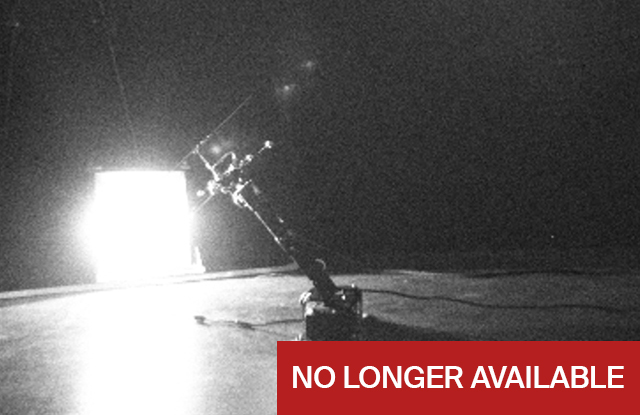
Advancing single photon perception for orbital robotics
Supervisor: Andrew Price / David Rodriguez / Mathieu Salzmann
Type of Project: Master thesis, 1 student
Duration: Dependent on Master thesis program
Submission of final report: TBD
Final Presentation:
Recommended: This project is intended for a masters thesis student interested in orbital robotics and imaging. Python programming skills are mandatory. Experience training a neural network is a plus.
CONTEXT
A Single-Photon Avalanche Diode (SPAD) camera can measure individual photons at extremely high framerates. In the example image, a sunlight simulator was placed behind a target satellite and directed into the camera sensor. Notably, the standard camera saturates and most information is lost whereas the SPAD is still able to discern the target. This project looks to explore the benefits and limitations of SPAD cameras for orbital robotics applications with a particular emphasis on spacecraft pose estimation.
This project is conducted in collaboration with the Space Robotics Lab at the University of Malaga in Spain.
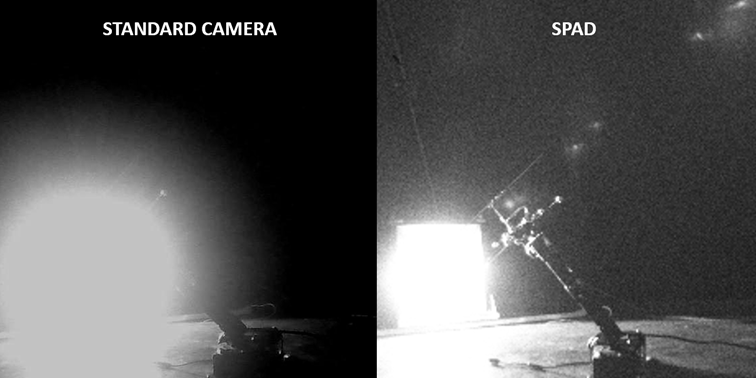
PROJECT SCOPE
The student will be introduced to a dataset captured at EPFL, CVLab using a spacecraft target, sunlight simulator, robotic arm and optitrack system; both a conventional RGB camera and a SPAD were used for imaging. The student will annotate the dataset and then train a neural network to perform pose estimation on the annotated images.
TASKS
- Annotation of the SPAD dataset
- Training of a simple CNN pose estimator
- Systematic evaluation of varying frame rates, exposure times and bith depths
CONTACT
Andrew Price, PostDoc at eSpace
andrew.price@epfl.ch
Dr. David Rodriguez
Research Scientist
University of Malaga Space Robotics Lab
david.rm@uma.es
STATUS OF THE PROJECT

EPFL Rocket Team
Click HERE to visit the EPFL Rocket Team’s projects page.

EPFL Spacecraft Team
Click HERE to visit the EPFL Spacecraft Team’s projects page.

Xplore
Click HERE to visit Xplore’s projects page.

Asclepios
Click HERE to visit Asclepios’s projects page.



